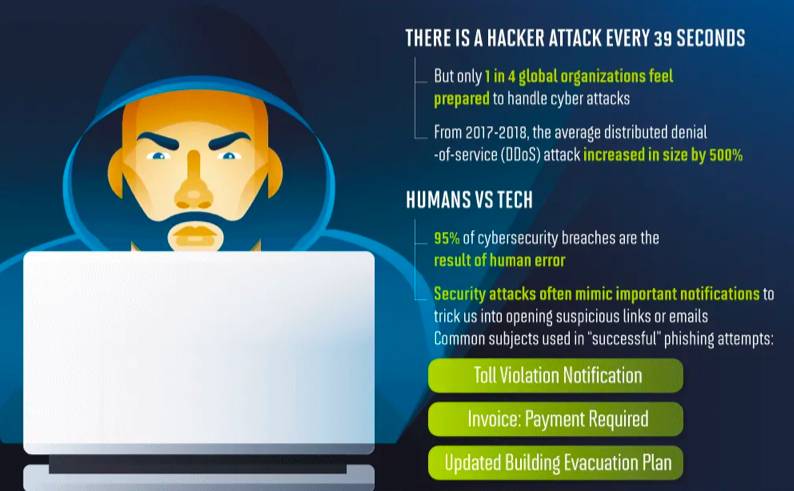Today’s businesses need to be prepared for unforeseen impacts on their work. A Business Continuity Plan is an excellent way to do this; it consolidates everything you need to do when an outside event disrupts your business. But, of course, any Business Continuity Plan also needs regular testing to ensure it’s fit for purpose.
We’ll be taking a look at an explanation of what a Business Continuity Plan is, what testing looks like, and how often you should be testing it.
What is a Business Continuity Plan?

A Business Continuity Plan explores how a business works after a disastrous event. It offers procedures in the face of fires, natural disasters, mass disease outbreaks, or data breaches.
A key concern of today’s plans is data backups. Since many industries (like content marketing for saas) require extensive planning, we need to know our protected data. Other critical components of the plan include comprehensive contact details for staff and maintaining productivity on a short-term or long-term basis.
If you employ a manual QA tester, you can understand a business continuity plan isn’t static. They require regular testing to ensure that they do what they’re supposed to. Testing also helps to spot any blind spots or areas for improvement.
Do I Need a Business Continuity Plan?
If the last few years have proved anything, it’s that nobody can really predict the future. As a result, unexpected events can completely upend our daily lives, and businesses can be severely compromised or go out of business altogether.
Invenio IT reported that in 2020, 51% of businesses worldwide didn’t have a business continuity plan. Given how dramatically the world of work has changed, that’s an oversight we literally can’t afford to make. As a result, 90% of businesses fail within a year if they can’t recover quickly from a disastrous event.
A business’s inability to keep working in the face of adversity is a threat to customer acquisition. Even if you have a detailed customer onboarding template, customers will likely reject you if your business isn’t reliable.
Business Continuity Plans demand significant investments of both time and resources. But they can be the difference between a business’s survival and its collapse.
How Do I Test My Plan?

Today’s businesses can approach business continuity plan testing in several different ways. It’s important to understand that different test types share the same fundamental tasks—understanding your plan, putting it into practice, and identifying potential improvements. The difference lies in how closely you look at your plan and the resources you can commit.
You might want to take some inspiration from the quality assurance process of software testing. First, have a clear idea of what you want to look at or improve. Then, involve everyone who needs to be involved, and has a dedicated team of people assigned to the task.
Business Continuity Plan Review
A Business Continuity Plan review is the most straightforward approach to plan testing. It acts as a basic audit of your plan with key personnel—the main BCP (Business Continuity Plan) team, department heads, and some management staff. During the review, participants simply read through the plan and see if there are any obvious flaws.
The rise of cloud services means it’s relatively easy to preserve modern-day business data. For example, if we’re calculating CSAT, we might use a cloud-based graph to track our progress. Although, don’t treat these as a silver bullet; make backups and keep a record of what cloud services you use.
This kind of test is easy to arrange and helps introduce your plan to new BCP team members. However, this test is also very lightweight. As a result, it lacks an in-depth assessment of a plan’s effectiveness and doesn’t communicate procedures (or benefits) to the broader workforce.
Tabletop Testing
Also known as a structured walkthrough, tabletop testing is a simple roleplay scenario. A business’s key stakeholders come together to simulate a risk to the business, and see if they understand how to respond. A continuity plan needs human eyes on it; the more hands-on you can be, the better.
Tabletop testing usually looks at a few different scenarios; participants review response procedures, outline responsibilities more clearly and see if they can improve the overall plan. If you’re just starting out, begin with something relatively simple like hacker attacks; these are both commonplace and relatively easy to thwart.

This testing type is a great way to bring employees up to speed on what’s required of them. It takes an in-depth approach to the plan and usually brings together multiple departments. This makes understanding and amending the project much more straightforward.
At the same time, tabletop testing has significant requirements. It takes a long time to do properly, and it needs thorough documentation for it to be of any use at all. It’s also not as hands-on as other testing types; in many cases, you’re more talking about the plan rather than putting it into practice.
Walk-Through
This is the most ambitious form of continuity plan testing. Participants in a walkthrough carry out recovery actions (such as restoring backups and testing redundant systems), and anything else a business thinks is relevant. This involves the plan’s critical personnel and any relevant employees.
It might also require traveling out of the office (for example, external data storage locations). Just as localization testing examines an app or website in different places, a walkthrough ensures all the components of your plan function wherever they’re located.
This hands-on approach to testing gives you the most precise idea of how effective your recovery plan is. That said, it’s also the most resource-intensive. For example, carrying out a walkthrough demands a lot of investment from a business. It can also be quite challenging to arrange if you need several different colleagues to participate.
How Often Should I Test My Plan?

Testing frequency depends on your business’ needs and the resources you have to work with. As you can see, detailed plan testing isn’t something you can do every day. Even at a basic level, it requires several people from several departments to be genuinely effective.
You also need to consider what you are testing for. Today’s businesses face multiple threats, but some are likelier than others. For example, if you work in an area susceptible to flooding, you may want to focus on your business’s flood response. That said, remember to consider commonplace threats, such as data breaches, to which a security assessment is a good response.
At a minimum, it’s best to conduct one tabletop test per year for each key area of concern. This includes recovering from likely disasters, business continuity, incident response, to name but a few key areas of potential agitation. You should also aim to carry out an in-depth walkthrough every two years. Time-intensive tests like tabletop testing might need to be carried out on weekends to ensure you don’t compromise your work schedule.
What Else Should I Consider?
The essential part of any testing is documentation. Record your testing, with particular emphasis on anything actionable. You also need to follow up on these actions for the testing to be worth doing at all.
If you’ve made any significant changes to your business (like moving premises or changing the size of your workforce), make sure you increase the frequency of your testing—at least in the short term. These major shifts can have a dramatic impact on what your continuity plan looks like.
Make sure you tell your wider workforce about your plan and encourage people to take part where necessary. This could shed light on new, valuable ideas, such as wiping sensitive files from your hard drives.
By treating your Business Continuity Plan as an organic element (such as one that is open to revision and evolution), you’ll do an excellent job of keeping your business safe in the future.
Inner Article Image Credit: Provided by the author; Thank you!
Top Image Credit: Ron Lach; Pexels; Thank you!


















